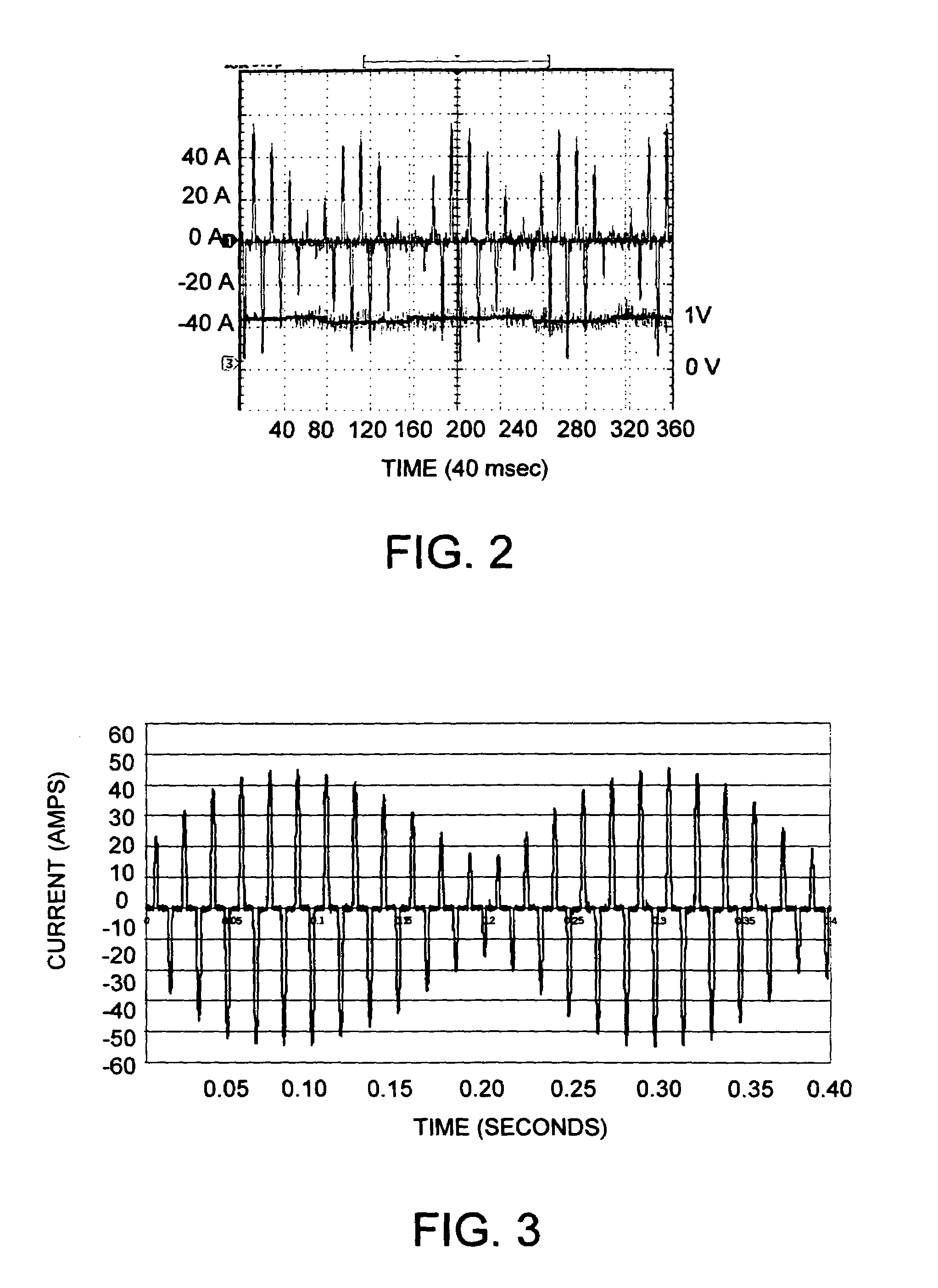Method for controlling the motor of a pump involving the determination and synchronization of the point of maximum torque with a table of values used to efficiently drive the motor
a technology of maximum torque and motor, which is applied in the direction of pump control, dc motor speed/torque control, motor parameter, etc., can solve the problem of increasing the rms current problem, excessive heating of the motor, and higher than necessary load on the power source, so as to reduce the rms current in the motor
- Summary
- Abstract
- Description
- Claims
- Application Information
AI Technical Summary
Benefits of technology
Problems solved by technology
Method used
Image
Examples
Embodiment Construction
[0016]The present invention is made in the context of a motor control system seen in FIG. 1. A pump 10 is coupled to the output shaft of an electric motor 11 through a gear mechanism12. The motor 11 is a three-phase brushless DC motor which is commutated through an inverter 13 according to switching signals received from a microcomputer 14. The motor 11 is provided with a position sensor 15, which in this embodiment is provided by Hall devices, but could also be provided by an encoder or a resolver. The position sensor 15 provides MOTOR POSITION feedback signals to the microcomputer 14. In addition, the pump 10 has a pressure sensor 16 which provides a PRESSURE feedback signal to an A-to-D conversion section 17 of the microcomputer 14. A current sensing device 18 is installed in the inverter 13 and provides a CURRENT feedback signal to the A-to-D conversion section 17 of the microcomputer 14. Also shown in FIG. 1 is an input device 20 for commanding a level of average pressure for t...
PUM
 Login to View More
Login to View More Abstract
Description
Claims
Application Information
 Login to View More
Login to View More - R&D
- Intellectual Property
- Life Sciences
- Materials
- Tech Scout
- Unparalleled Data Quality
- Higher Quality Content
- 60% Fewer Hallucinations
Browse by: Latest US Patents, China's latest patents, Technical Efficacy Thesaurus, Application Domain, Technology Topic, Popular Technical Reports.
© 2025 PatSnap. All rights reserved.Legal|Privacy policy|Modern Slavery Act Transparency Statement|Sitemap|About US| Contact US: help@patsnap.com



